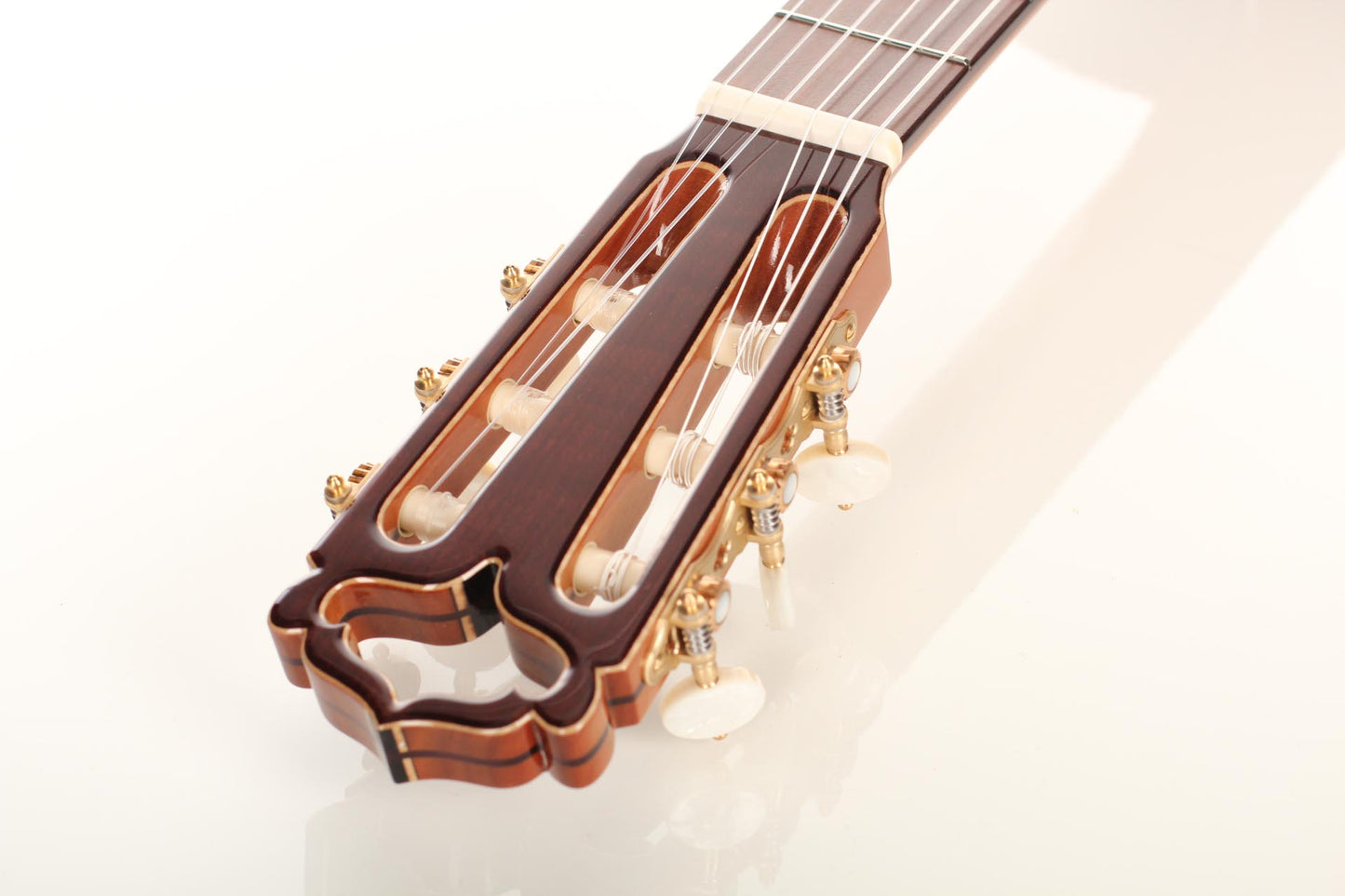Armin Hanika - HE Doubletop N
Armin Hanika - HE Doubletop N
Details
Details
Overview
Overview
Shipping important note
Shipping important note
Delivery times are typically reliable and most instruments arrive within the estimated timeframe.
Should any unexpected delay occur, our team will keep you informed and provide support at every step. For all shipping details and exceptions, please see our Shipping Policy.
Details about GPSR
Details about GPSR
















Video overview

More details about the guitar
About the luthier
At HANIKA craftsmanship is understood as custom work and sound as art. A guitar from the famous Baiersdorf manufacture is a symbol of quality and craftsmanship tradition. Since 1953 it has been the basis for the success story of the company, combined with trend-setting innovations. Master plucked instrument maker Armin Hanika took over the company from his father in 1993 and has been building classical guitars of outstanding quality ever since.About the guitar
Back and sides made from high-quality, strong, thermo-treated curly maple and a double-top soundboard made from finest thermo-treated spruce. The thermo-treated cherry wood neck has been reinforced several times at its core with thermo-treated plum wood/maple, including bridge pins. The asymmetrically weighted domed soundboard with a sandwich design incorporates thermo-treated spruce struts to optimise performance. The fretboard is made from thermo-treated plum wood, so the entire guitar is made from domestic woods. The HE Double-Top N delivers superior dynamics, a balanced range of tone colour and a crisp and sustained sound. The materials used for this classical guitar, along with workmanship and its sound, mean that it is able to meet elevated demands. The slotted thermo-treated maple/maple headstock and exquisite designer tuning machines by Nicoló Alessi underline the high quality of the HE Double-Top N. In terms of aesthetics, this concert guitar dazzles its audience with a UV-cured high-gloss varnish on its body and a natural finish on its soundboard. A Hiscox Pro II case is included. The photos of this guitar are general product images that may differ from the actual instrument.Regular care extends the life of the instrument
Even with careful use, a classical guitar may gradually change in appearance or respond to unstable storage conditions. Have a close look at your guitar regularly and be attentif to changes. If your instrument is suffering from its environement, it will let you know.
Protect Your Guitar: Handle with Care
Be mindful when touching your instrument with greasy or unwashed hands: any skin contact is a small attack on the varnish. Of course, a guitar is made to be played, but taking a few precautions helps preserve its beauty: wash your hands before playing, wear long sleeves, and avoid unnecessary direct skin contact with the body of the instrument.
Pro tip: Avoid playing with a button-up shirt, heavy jewelry, or a belt, as these can scratch the guitar. Also, make sure your guitar case is free of any objects that could damage the instrument during storage.
String care
A good habit to adopt is wiping down your strings briefly after each playing session. This small action significantly extends their lifespan and helps maintain a consistent, comfortable feel under your fingers.
Most importantly, clean strings are essential for keeping your instrument in tune. Corrosion, sweat, and dust can affect the uniformity of the strings and interfere with accurate tuning across the entire fingerboard.
Pro tip: If you're having trouble getting your guitar in tune, it might be time to change the strings. A useful test is to compare the pitch of the 12th fret harmonic with the fretted note at the 12th fret; if there's an unusually large gap between them, your strings may have lost their integrity and should be replaced.
Keep Your Shellac Finish Shining!
Got a guitar with a shellac (French polish) finish? Here's a simple trick: Take a clean microfiber cloth and gently breathe on the surface to create a light mist. Then, softly rub to remove fingerprints, sweat, and grease. That’s usually all it takes to keep it looking great, no products needed!
Pro tip: Every few years, treat your guitar to a check-up with a luthier to keep it in top shape.
Storing Your Guitar: Climate Matters
Your guitar can safely stay outside its case, as long as the surrounding environment maintains 42–55% humidity and a temperature between 18–25°C.
Keep in mind that humidity levels can still fluctuate inside the case, especially during seasonal changes.
- Too much humidity may cause overtightened strings and a dull tone.
- Too little humidity can lead to a bulging top, string buzz, or even cracks.
Avoid placing your guitar near radiators, air conditioners, or windows with direct sunlight.
Pro tip: Always close your guitar case while playing. This helps preserve a stable microclimate inside the case, so your instrument is protected the moment you put it back in.




































































